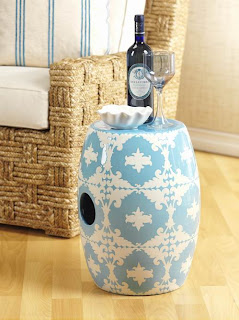
I've been taking detours down Chichester Road in New Canaan for almost two decades, just for the fun of it, the way you might stop into a museum every so often to see paintings you love. There are five modern houses on Chichester, and while I can't say they are the most beautiful modern houses in New Canaan, I'm absolutely sure there is no cluster of modern houses in New Canaan that are both so beautiful and so easy to see from the road.
It is because the houses are so visible and so beautiful, and because of the way they were developed, that I think Chichester stands as the epitome and symbol of Modern New Canaan, more so than the houses of the Harvard Five. The Harvard Five houses are terrific, but they are widely scattered and generally hard to see, and so they exist mainly for their owners, for participants in modern house tours and for readers of the large format books that the Harvard Five -- demi-gods that they are -- seem to inspire.
None of the houses on Chichester were designed by Harvard Five architects. On the contrary, the modern house neighborhood on Chichester is the work of two men -- John Black Lee and Hugh Smallen.
Lee and Smallen bought the land and they planned it as a subdivision of modern houses -- in fact, they required that the houses be modern. And then they designed four of the houses (a fifth, which was not part of the original subdivision, was designed by William Pedersen).
So when I think of Chichester's history, visibility and beauty -- its prominence in New Canaan -- I'm compelled to say that Lee and Smallen are seriously undervalued as important figures in New Canaan modernism. They've been overwhelmed by the adoration of the Harvard Five, which has left other good modern architects in New Canaan unjustifiably overshadowed, Lee and Smallen prominent among them.
Gina and I have always thought the house John Black Lee designed on Chichester (known as
Lee House 2) to be probably the most beautiful house we've been in (the picture above, which I borrowed from the Modern House Survey, is of Lee 2). My one visit was on a humid day several summers ago, when I noticed a newspaper ad for a realtor's open house at one of the other houses on Chichester; it turned out to be Smallen's
Becker House and as we drove to it along Chichester we noticed that there was an open house that day at Lee 2 as well, so we got to see both. Smallen's house was beautiful, Lee's both exquisiite and, it seemed from the short time we were in it, extremely livable. Here's what the
Modern House Survey says about it:
Lee House 2 was designed by John Black Lee for his family after they had outgrown their first house on Laurel Road. Lee acquired the lot in 1955 ... and the house was completed in 1956. This lot was part of the twenty acres on Chichester Road that Lee and Hugh Smallen had purchased in 1954 to be subdivided into six parcels with the provision that the new houses built on the lots were of Modern design.
The other houses on Chichester are the
Parsons House (with a garage designed by Lee) and the
Smallen House, both designed by Hugh Smallen, and William Pedersen's
Beaven Mills House. Take a slow drive down Chichester to check them out or, better yet, park and walk. It's a beautiful road and the history and context provided by the modern house survey makes it all the more interesting and reveals its significance. -- ta
 We were happy to receive an email today from our friend, Helen Risom Belluschi, telling us that her father, the prolific, preeminent furniture designer Jens Risom, is featured in Dwell Magazine's September issue.
We were happy to receive an email today from our friend, Helen Risom Belluschi, telling us that her father, the prolific, preeminent furniture designer Jens Risom, is featured in Dwell Magazine's September issue.















































